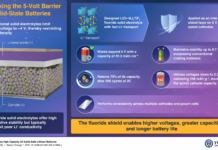The Race for Better Electric Vehicle Batteries Accelerates
In the evolving world of electric mobility, the demand for batteries that offer both high energy density and long cycle life has become a critical challenge. Lithium metal batteries (LMBs) have long been viewed as the next frontier in battery innovation due to their potential to power long-range electric vehicles (EVs) and electric aircraft. However, the delicate balance between performance and durability has stalled their commercial deployment. Now, Contemporary Amperex Technology Co. Limited (CATL), a global leader in battery technology, has made a significant breakthrough. Their research, published in Nature Nanotechnology, introduces a novel approach to solving key performance issues in LMBs — potentially transforming the future of electric vehicle batteries.
Groundbreaking Research Unlocks New Electrolyte Strategy
CATL’s research focuses on developing a reliable lithium metal battery that offers both long cycle life and ultra-high energy density. By applying quantitative mapping and advanced tracking methods, the team was able to gain unprecedented insights into battery degradation. Traditional approaches targeted improving solvation structures and solid-electrolyte interphases, but often at the cost of battery life. CATL’s new methods reveal the real reason behind performance loss: the gradual consumption of the electrolyte salt, LiFSI.
Doubling Battery Life and Surpassing 500 Wh/kg
Armed with this knowledge, CATL redesigned the electrolyte formulation. By incorporating a lower molecular weight diluent, they increased the concentration of LiFSI salt, improving ionic conductivity and reducing viscosity. The result is a prototype battery that maintains the same Coulombic efficiency but achieves double the cycle life — reaching 483 cycles. More importantly, it supports energy densities beyond 500 Wh/kg. This advancement not only extends battery lifespan but makes LMBs more suitable for commercial applications, especially in electric vehicles and electric aviation.
Redefining Battery Performance Metrics
The study also challenges long-standing industry assumptions. Until now, Coulombic efficiency was the go-to metric for evaluating lithium metal batteries. CATL’s findings show that electrolyte salt stability plays a far more critical role in determining battery longevity. This shift in understanding could influence how manufacturers and researchers approach battery development going forward, emphasizing durability alongside performance.
CATL Leads the Charge in Clean Energy Innovation
Conducted at CATL’s 21C Lab, the research exemplifies the company’s strong commitment to pushing the boundaries of battery science. With over RMB 18.6 billion invested in R&D in 2024 and more than 43,000 global patents filed or granted, CATL continues to bridge the gap between theoretical research and practical application. Their latest work sets a new benchmark for lithium metal battery performance, opening the door for more efficient, durable batteries in electric vehicles and beyond.






